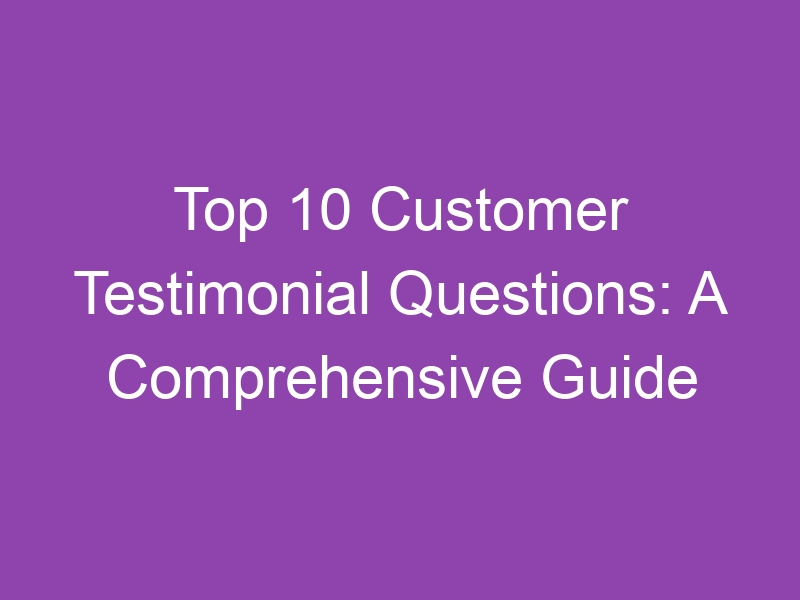Content Outline
- Introduction
- A. Definition of customer generated marketing
- B. Importance of customer generated marketing
- Benefits of customer generated marketing
- Examples of successful customer generated marketing campaigns
- How to implement customer generated marketing in your business
- Challenges of customer generated marketing and how to overcome them
- Conclusion
Introduction
Customer-generated marketing has become increasingly popular in recent years as a way for businesses to connect with their audience in a more authentic and engaging way. This approach involves leveraging user-generated content (UGC) such as social media posts, reviews, and testimonials to promote products or services.
One of the main advantages of customer-generated marketing is that it allows businesses to tap into the power of word-of-mouth advertising. According to a survey by Nielsen, 92% of consumers trust recommendations from friends and family over all other forms of advertising.
- UGC can also help to build trust and credibility with potential customers, as it provides social proof that others have had positive experiences with a brand or product.
- Additionally, incorporating UGC into marketing efforts can help to humanize a brand and make it more relatable to consumers.
- However, it’s important to note that not all user-generated content is created equal. Businesses must be strategic in selecting and curating content that aligns with their brand values and messaging, and avoid using content that could potentially damage their reputation.
Overall, customer-generated marketing can be a powerful tool for businesses looking to build stronger relationships with their audience and drive sales. By leveraging the authentic voices of their customers, brands can create a more engaging and effective marketing strategy.
Introduction – A. Definition of customer generated marketing
Customer generated marketing refers to any marketing activity that is created and shared by customers rather than by a brand or company. It is also known as user-generated content (UGC) marketing, and it has become increasingly popular in recent years thanks to the rise of social media and the democratization of content creation.
Customers can generate marketing content in a variety of ways, including:
- Writing product reviews on a brand’s website or on third-party review sites like Yelp or Trustpilot.
- Creating social media posts that showcase a brand’s products or services.
- Sharing photos or videos of themselves using a brand’s products.
- Producing blog posts, podcasts, or videos that review or promote a brand’s products or services.
The benefits of customer generated marketing are numerous. Firstly, it can be much cheaper than traditional advertising. Brands don’t have to pay for the creation of the content, since customers are creating it themselves. Secondly, it can be more authentic and trustworthy than brand-generated content, as customers are seen as unbiased sources of information.
According to a recent survey, 90% of consumers say that UGC influences their purchasing decisions. Additionally, UGC can lead to higher engagement rates on social media, with one study showing that Instagram posts with UGC have a 4.5% higher engagement rate than posts without UGC.
However, there are also some potential drawbacks to customer generated marketing. For example, brands may not have control over the content that customers create, and some of it may be negative or damaging. Additionally, there is a risk of intellectual property infringement if customers use a brand’s logos or other copyrighted material without permission.
Overall, customer generated marketing can be a powerful tool for brands looking to engage with their audience and create authentic, trustworthy content. However, it is important for brands to approach UGC with caution and to have a clear strategy in place for managing and promoting customer-generated content.
Sources: Yotpo, Sprout Social, Business 2 Community
Introduction – B. Importance of customer generated marketing
Customer generated marketing refers to the use of content created by customers to promote a brand or product. This form of marketing has become increasingly popular in recent years, as consumers become more skeptical of traditional advertising and look to their peers for recommendations.
One of the key benefits of customer generated marketing is that it is often more authentic and trustworthy than traditional advertising. According to a survey by BrightLocal, 84% of people trust online reviews as much as a personal recommendation.
Another advantage of customer generated marketing is that it can be more cost-effective than traditional advertising. Brands can encourage customers to create content by offering incentives such as discounts or the chance to be featured on their social media channels.
Furthermore, customer generated marketing can help to increase engagement and build a sense of community around a brand. By encouraging customers to share their experiences and opinions, brands can foster a sense of loyalty and create a more personal connection with their audience.
Overall, customer generated marketing can be a powerful tool for brands looking to connect with their audience and build trust. By leveraging the power of user-generated content, brands can create more authentic and engaging marketing campaigns that resonate with their customers.

Benefits of Customer Generated Marketing
Customer generated marketing (CGM) is a type of marketing that relies on customers to create content related to a brand or product. This method has become increasingly popular in recent years due to the many benefits it can offer. Here are some of the primary benefits of CGM:
- Increased Authenticity: CGM is often perceived as more authentic than traditional marketing methods because it comes directly from customers who have used and experienced the product or service.
- Cost-Effective: CGM can be an affordable way to promote a brand or product since it relies on customers to create content rather than hiring expensive marketing agencies.
- Increased Engagement: CGM can help increase engagement with a brand or product since it allows customers to share their experiences and opinions with others.
- Improved Customer Relationships: CGM can help build stronger relationships with customers since it shows that a brand values and listens to their feedback.
- Increased Reach: CGM can help a brand reach a wider audience since customers are likely to share their content on social media and other online platforms.
According to Business 2 Community, 86% of consumers say authenticity is important when deciding what brands they like and support. Additionally, Business Insider reports that 70% of consumers trust online reviews and recommendations from friends and family more than any other form of advertising.
Overall, CGM can be a powerful tool for brands looking to increase authenticity, engagement, and customer loyalty while also reaching a wider audience. By leveraging the power of their customers, brands can create meaningful connections and build a loyal customer base.
Examples of Successful Customer Generated Marketing Campaigns
Customer generated marketing is a type of marketing strategy that relies heavily on the participation of customers in creating and spreading marketing messages. Through the power of social media, customers can share their experiences with a brand, product, or service with their followers, friends, and family, which can result in increased brand awareness, engagement, and sales.
Here are some examples of successful customer generated marketing campaigns:
- Ipsy – Ipsy is a subscription-based beauty company that uses user-generated content to promote their products. Ipsy encourages their customers to share their favorite products on social media using a specific hashtag, which helps them to reach a wider audience and increase brand awareness.
- REI – REI’s #OptOutside campaign is a customer-generated marketing campaign that encourages people to spend time outdoors instead of shopping on Black Friday. REI’s customers can share photos and stories of their outdoor adventures on social media using the #OptOutside hashtag, which helps to promote the campaign and increase brand awareness.
- Starbucks – Starbucks uses customer-generated content to promote their brand and products on social media. Starbucks customers can share photos of their drinks and experiences at Starbucks on social media using the #Starbucks hashtag, which helps to increase brand awareness and engagement with their customers.
These examples show how customer-generated marketing campaigns can be successful in increasing brand awareness, engagement, and sales. By encouraging customers to share their experiences with a brand, companies can create a sense of community and loyalty among their customers.
Overall, customer generated marketing can be a powerful tool for businesses looking to increase their reach and engagement with their customers. By leveraging the power of social media and user-generated content, companies can create a more authentic and personalized marketing message that resonates with their audience.
How to Implement Customer Generated Marketing in Your Business
Customer generated marketing (CGM) is a powerful tool that can help businesses increase brand awareness and loyalty. It involves leveraging user-generated content to promote a product or service to a wider audience.
Implementing CGM in your business can seem daunting, but with these simple steps, you can get started:
- Encourage user-generated content: Encourage your customers to create content related to your brand. This can be in the form of reviews, social media posts, or even blog posts.
- Showcase user-generated content: Once you have user-generated content, showcase it on your website and social media platforms. This will help to build trust and credibility with potential customers.
- Engage with your audience: Respond to user-generated content and engage with your audience. This will help to build a relationship with your customers and encourage them to create more content.
- Track and analyze: Use tools like Google Analytics to track the success of your CGM campaign. This will help you to identify what is working and what needs improvement.
Implementing CGM in your business has many benefits. According to a study by Nielsen, 92% of consumers trust organic, user-generated content more than they trust traditional advertising. Additionally, CGM can help to increase customer engagement and loyalty.
However, there are also tradeoffs to consider. While CGM can be an effective marketing tool, it requires a significant amount of time and effort to implement and manage. It also requires a certain level of trust in your customers, as you are essentially giving them control over your brand’s message.
In conclusion, implementing customer generated marketing in your business can be a powerful way to increase brand awareness and loyalty. By encouraging user-generated content, showcasing it, engaging with your audience, and analyzing your results, you can create a successful CGM campaign. Just remember to consider the tradeoffs and invest the necessary time and effort to make it work.
Sources: Nielsen
Challenges of Customer Generated Marketing and How to Overcome Them
Customer generated marketing refers to the creation and sharing of marketing content by customers themselves. While it can be a highly effective way to generate buzz and increase brand awareness, there are also several challenges that come with this approach.
1. Lack of Control
One of the biggest challenges of customer generated marketing is the lack of control that brands have over the content that is created. Customers may not always create content that aligns with the brand’s messaging or values, which can be damaging to the brand’s reputation. To overcome this challenge, brands should provide clear guidelines and instructions for customers who are creating content. This can help ensure that the content remains on-brand and aligns with the brand’s messaging.
2. Quality Control
Another challenge is maintaining quality control over the content that is created. While some customers may create high-quality content, others may not have the skills or resources to create content that is up to par. To address this challenge, brands can provide resources and tools to help customers create better content. This can include things like templates, design guides, and editing tools.
3. Legal Issues
There are also legal issues to consider when it comes to customer generated marketing. Brands need to ensure that all content created by customers complies with applicable laws and regulations. This can include things like copyright laws, privacy laws, and advertising standards. To overcome this challenge, brands can provide legal guidance and resources to customers who are creating content.
4. Lack of Engagement
Finally, another challenge is getting customers to engage with the brand and create content in the first place. While some customers may be eager to create content, others may not be interested or may not have the time or resources to do so. To address this challenge, brands can offer incentives and rewards to customers who create content. This can include things like discounts, exclusive content, and recognition on social media.
Overall, while there are certainly challenges associated with customer generated marketing, it can be a highly effective way to engage with customers and generate buzz for a brand. By providing clear guidelines, resources, and incentives, brands can overcome these challenges and create successful customer generated marketing campaigns.
Sources:
– Forbes
– Social Media Examiner
Conclusion
Customer generated marketing is a powerful tool that can help businesses increase their reach, engagement, and ultimately, sales. By tapping into the creativity and enthusiasm of their customers, companies can create content that is more authentic and relatable than traditional marketing materials. However, it’s important to note that customer generated marketing is not a one-size-fits-all solution.
Businesses need to carefully consider their target audience, brand message, and marketing goals before implementing a customer generated marketing strategy. Additionally, they need to be prepared to invest time and resources into managing and moderating user-generated content to ensure it aligns with their brand values and standards.
Despite these challenges, the potential benefits of customer generated marketing are clear. According to a study by Ipsos, user-generated content is 35% more memorable and 50% more trusted than other types of media. Additionally, consumers are 2.4 times more likely to view user-generated content as authentic compared to content created by brands.
As businesses continue to look for new ways to connect with their customers, customer generated marketing is likely to play an increasingly important role in their marketing mix. By encouraging their customers to become brand advocates and creators, companies can tap into a powerful source of creativity, authenticity, and engagement.
References:



